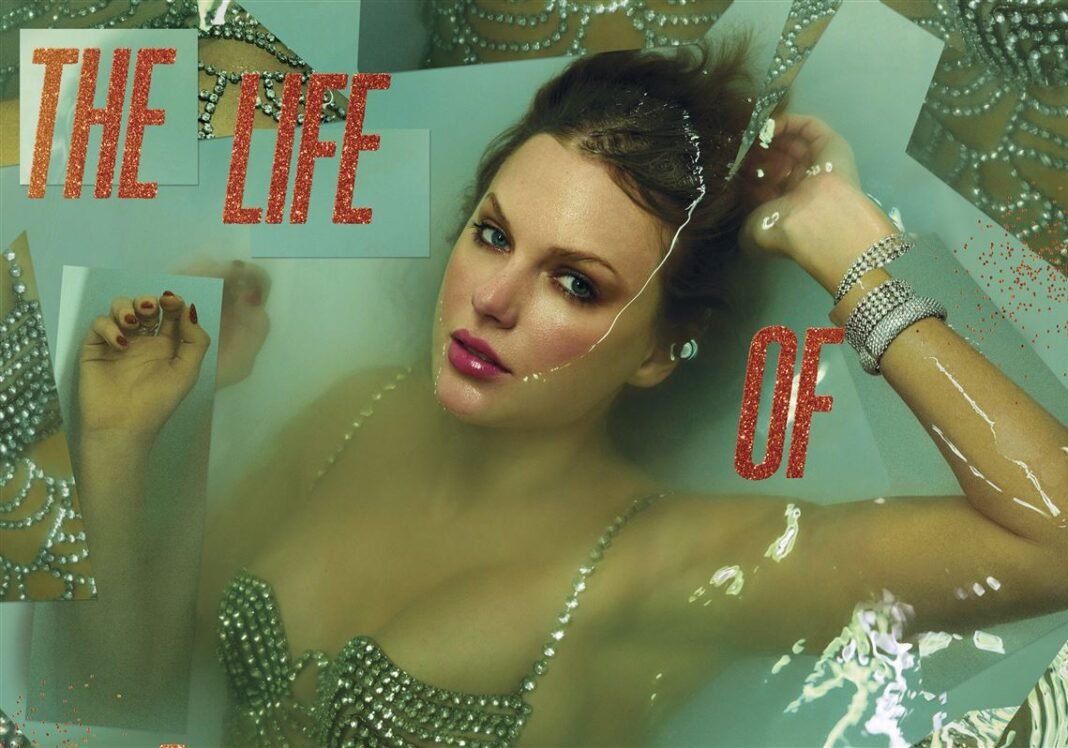At 3 a.m. in Stockholm, while 70,000 fans slept soundly after witnessing the spectacle of the Eras Tour, Taylor Swift was wide awake in a studio across town with Max Martin, reimagining what it means to create an album. “Most artists tour to promote a record,” says veteran music producer Sarah Chen, who has worked with artists from Beyoncé to The Weeknd. “Taylor flipped the entire model—she let the tour become the record.” On October 3, 2025, that unconventional approach resulted in The Life of a Showgirl shattering Spotify’s single-day streaming record with 1.2 million concurrent listeners at one point—a number that eclipses the population of most major cities. But the numbers only tell half the story. The real revolution happened in those Swedish sessions between stadium shows, where Swift and her legendary production team proved that the boundaries between performance and creation are more fluid than the music industry ever imagined.
The traditional album cycle has long followed a predictable rhythm: write, record, promote, tour, rest, repeat. Artists retreat to studios for months, emerging with finished products that they then spend a year or more promoting on the road. The touring phase has historically been seen as the antithesis of creativity—a grueling, physically demanding obligation that drains rather than fuels artistic inspiration. But Swift’s 12th studio album, The Life of a Showgirl, demolishes this outdated framework entirely, offering instead a radically different model where the energy of performance doesn’t interrupt creation but rather supercharges it.
The decision to work with Max Martin and Shellback—two of pop music’s most celebrated architects—while simultaneously executing what would become the highest-grossing tour of all time wasn’t just ambitious; it was logistically audacious. Martin, whose Stockholm-based studio has been the birthplace of hits for everyone from Britney Spears to The Weeknd, doesn’t typically accommodate artists on abbreviated schedules between tour stops. His meticulous production style demands time, focus, and the kind of sustained creative immersion that seems antithetical to the chaos of a global stadium tour.
Yet something remarkable happened when Swift’s touring schedule intersected with Martin’s Swedish studio sessions. Rather than diluting the creative process, the intensity of performing for massive audiences night after night seemed to crystallize Swift’s artistic vision. Industry insiders familiar with the sessions describe an artist operating at the height of her powers, translating the raw energy of live performance into studio recordings with unprecedented immediacy. The album’s lead track, “The Fate of Ophelia,” which became the most-streamed song in a single day in Spotify history, carries the kinetic charge of an artist who had spent the previous evening commanding a stadium—its production crisp and urgent, its emotional resonance unmistakable.
This approach represents a fundamental reimagining of how creative momentum works. Conventional wisdom suggests that artists need distance and rest to process tour experiences into album material. Swift proved the opposite: that the heightened emotional state of performance, the nightly connection with tens of thousands of fans, and the adrenaline of executing a three-hour theatrical production could feed directly into studio work. It’s creation in real-time, with the audience’s energy still reverberating in the artist’s consciousness.
The logistics alone tell a fascinating story. Coordinating studio time with Martin and Shellback while managing the demands of the Eras Tour required military-grade planning. Swift’s team had to account for performance schedules, travel between cities, vocal rest requirements, and the unpredictable nature of live shows—all while maintaining the focus necessary for album production. Some sessions reportedly took place in the narrow windows between sound checks and performances. Others happened in those late-night or early-morning hours when most touring artists would be desperately seeking sleep.
What emerged from this unconventional process was a 12-track album that Swift herself described as filled with “bangers” when she first revealed the project on Travis Kelce’s podcast New Heights in August. The characterization proved prescient. Within 11 hours of release, The Life of a Showgirl had broken Spotify’s record for most-streamed album in a single day in 2025, surpassing Playboi Carti‘s Music from March 14, 2025. The achievement wasn’t just about Swift’s massive fanbase showing up; it was about the quality of work that emerged from this radical production model.
The collaboration with Martin and Shellback brought a sonic sophistication that balanced Swift’s narrative instincts with radio-ready production values. Martin’s signature approach—melodically complex hooks wrapped in deceptively simple arrangements—proved the perfect complement to Swift’s storytelling. Shellback’s rhythmic innovations added propulsive energy that reflected the album’s thematic concerns with performance, spectacle, and the life of an artist who has chosen to live perpetually in motion.

Music industry analysts are watching this model closely because it challenges fundamental assumptions about how albums should be made in the streaming era. The traditional cycle was built for physical media—records needed to be finished, manufactured, and distributed months before release. Even in the digital age, most artists have maintained this separation between creation and promotion. Swift’s approach suggests a different possibility: that the creative process can remain fluid, responsive, and intertwined with performance in ways that actually enhance rather than compromise artistic output.
Consider what this means for the future of music production. If artists can maintain creative productivity while touring—arguably the most demanding phase of their careers—it fundamentally alters the economics and timeline of album releases. Tours could become incubation periods for new material rather than exhausting promotional obligations. Studios could be mobilized globally, with artists working with different producers in different cities as their tours move across continents. The geographical barriers that once limited collaboration could dissolve entirely.
There’s also something culturally significant about Swift creating an album called The Life of a Showgirl while literally living that life. The meta-textual resonance isn’t lost on listeners who understand that these songs were forged in the same crucible of nightly performances that the album itself examines. It’s art reflecting life reflecting art in real-time, creating a feedback loop of authenticity that resonates powerfully with an audience that has watched Swift’s Eras Tour become a cultural phenomenon.

The 1.2 million concurrent listeners on Spotify Friday morning represented more than commercial success; they represented a massive audience choosing to experience this album simultaneously, understanding that they were witnessing something historically significant. In an age of infinite choice and on-demand consumption, that kind of synchronized cultural moment has become increasingly rare. The fact that it happened around an album created under such unconventional circumstances only amplifies its significance.
Swift’s model also challenges the notion that creativity requires isolation. The romantic image of the tortured artist alone in the studio has dominated music mythology for decades. But Swift demonstrated that creativity can thrive in motion, that artistic inspiration can be drawn from the energy of performance, and that the presence of an audience—even if that audience is nights away from hearing the finished product—can focus rather than fragment artistic vision.
For other artists watching Swift’s success with The Life of a Showgirl, the implications are profound. The album proves that tour momentum doesn’t have to dissipate during the creative process—it can be captured, channeled, and transformed into studio work that carries the electricity of live performance. It suggests that the future of music production might look less like the traditional studio-bound approach and more like this hybrid model where performance and creation exist in constant dialogue.
The partnership with Martin and Shellback was crucial to making this model work. Lesser producers might have struggled with the compressed timelines and unconventional scheduling. But Martin’s decades of experience and Shellback’s adaptability allowed them to work within Swift’s constraints while maintaining the production quality that has defined Martin’s legendary career. They understood that they weren’t just making an album; they were participating in an experiment that could reshape how major artists approach album production.
As the music industry continues its evolution in the streaming era, The Life of a Showgirl stands as a landmark achievement—not just for its record-breaking numbers, but for what it represents about the future of creativity. Swift proved that the boundaries between performance and production, between touring and recording, between promoting existing work and creating new work, are far more permeable than the industry has traditionally allowed.
The Sweden sessions weren’t just about making an album between tour dates. They were about fundamentally reimagining when and how creativity happens, proving that artists at the peak of their performing powers can channel that energy directly into studio work with extraordinary results. In doing so, Swift hasn’t just broken streaming records; she’s broken the model itself, offering a blueprint that could define how major artists create music for years to come. The revolution wasn’t just in the numbers—it was in the method, and that might be the most significant legacy of The Life of a Showgirl.



